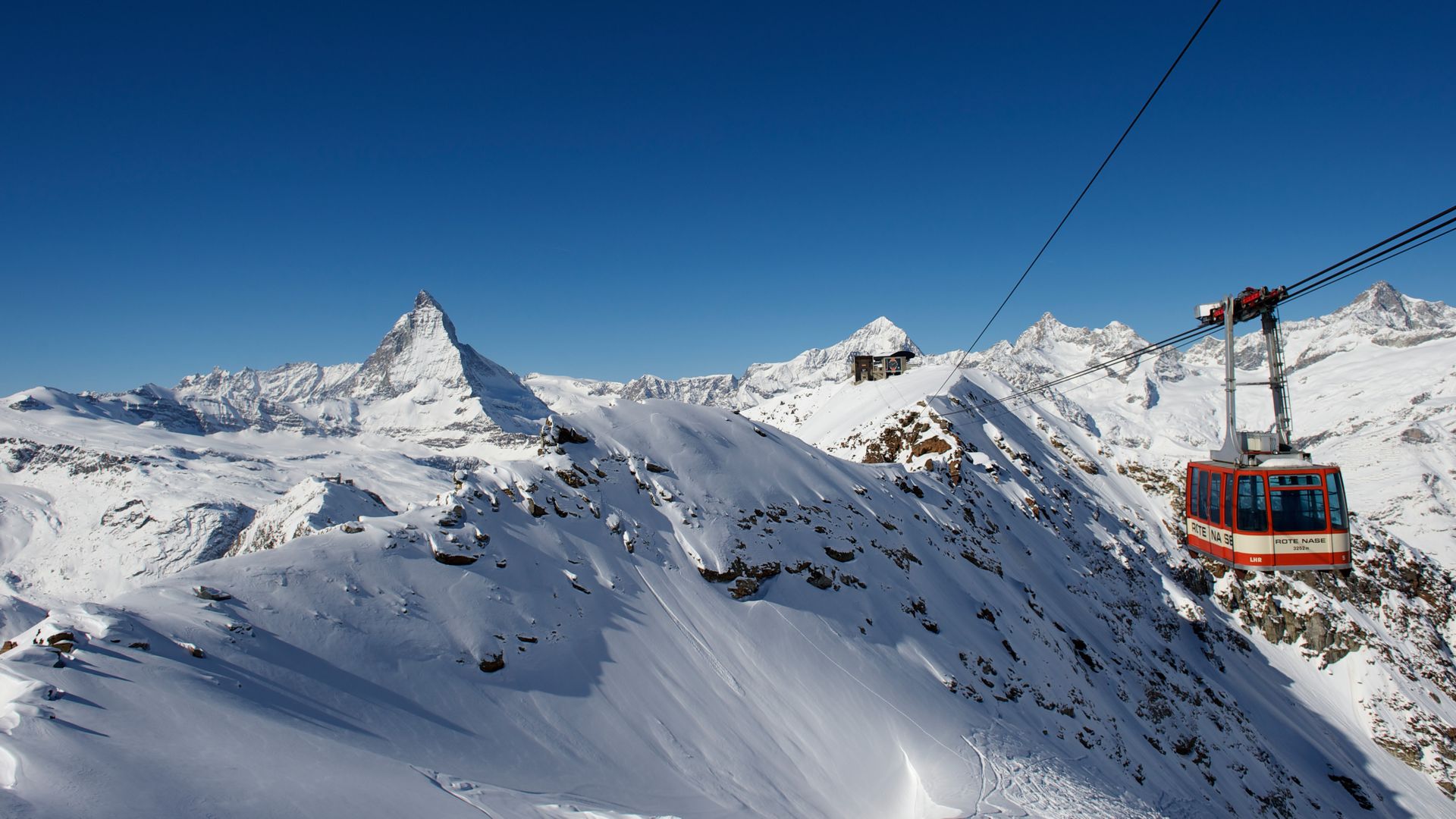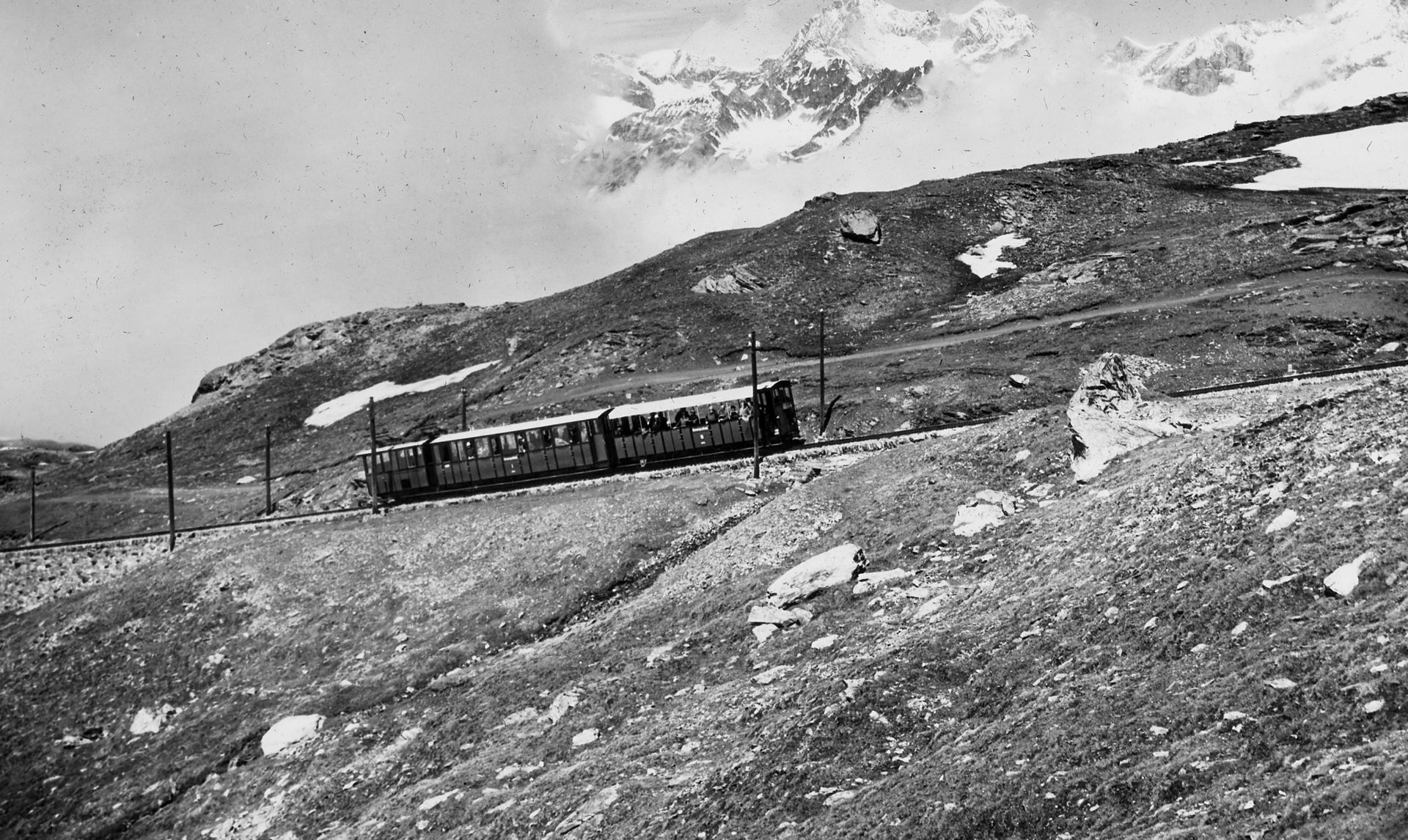The summit station is lower than the valley station
Story 85
The “Triftji” ski resort was always very popular with good skiers. Here they found steep moguls and good snow conditions until spring. However, the connection to the Gornergrat was insufficient and those responsible built a new cableway. The result was a curiosity.
The north slope between Hohtälli and Stockhorn was a challenge even for experts. To master the never-ending and large moguls you needed good coordination and had to be in good shape. The Gornergrat Railway connected the area with a ski lift in 1964, creating an Eldorado for fans of mogul slopes and the corresponding competitions.
Challenging balancing act
Anyone who had covered the entire northern slope, travelled up from Gant to Hohtälli in the gondola and now wanted to go to the Rote Nase for the next descent had to cross a demanding, snow-covered and narrow ridge with their skis on their backs and ski sticks in their hands. This felt like torture for everyone, as the skiers of the Swiss national team found out for themselves in the summer of 1966.
Difference in altitude between mountain and valley – a curiosity
The Gornergrat Railway decided to improve the situation and, in 1985, began the two-year construction of the aerial cableway from Hohtälli (3,273 metres above sea level) to the Rote Nase (3,262 metres above sea level).
A curious feature of the construction of this cableway was the fact that the Hohtälli valley station (3,273 metres above sea level) was higher than the summit station on the Rote Nase (3,262 m above sea level)!



